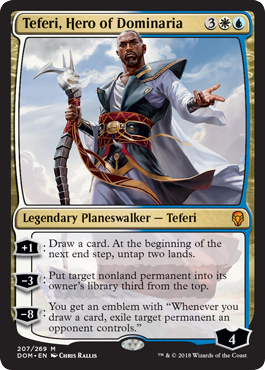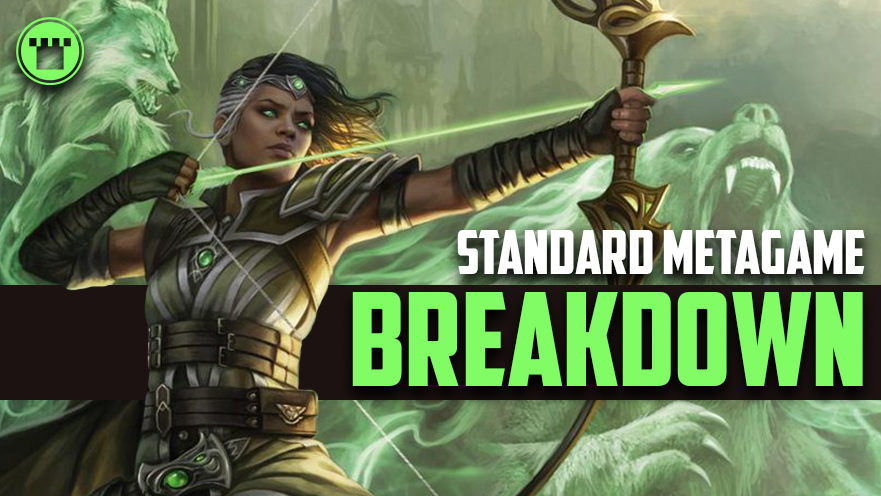Two weeks have passed since War of the Spark’s release, and we have enough data to start analyzing the new Standard metagame. From the looks of it, the landscape is as diverse as ever, with aggro, midrange, and control strategies each claiming a large slice of the pie.
While there are at least a dozen viable strategies, a few decks have risen to the top of the heap. Today, we’ll be providing a quick rundown of each of those decks: what they do, why they’re strong, and how to craft a winning game plan against them. If you’re looking to build a winning brew for your next FNM, these are the decks you’ll likely face.
Simic Nexus

Simic Nexus was a popular choice for early tournaments and had a strong Week 1 showing. Nexus of Fate continues to be one of the most powerful cards in Standard, and new additions from War of the Spark have made this deck even more consistent.
Strengths: Nexus decks have historically fared well against midrange decks, but struggled against aggro. Blast Zone gives it additional tools against low-to-the-ground creature decks, particularly Mono-Blue. Tamiyo, Collector of Tales also lends added redundancy.
Weaknesses: Be that as it may, Mono-Red and other decks with fast closing speed can be rough match-ups for Simic Nexus. Teferi, Time Raveler can also stop Nexus decks from going off during the end step, and Dovin’s Veto is a hard answer to the deck’s most critical spells.
Browse Simic Nexus decks on MTGGoldfish!
Mono-Red

The biggest thorn in Nexus’s side is Mono-Red, which took down the recent SCG Open in Richmond. Mono-Red is a classic Week 1 strategy, and other decks are still recalibrating to try to beat it.
Strengths: Mono-Red decks aren’t just aggressive – they’re surprisingly resilient. Between Light up the Stage, Experimental Frenzy, Risk Factor, and Chandra, Fire Artisan, red decks in today’s Standard have unprecedented reach. Having three three-damage burn spells also means that the damage will add up quickly.
Weaknesses: Mono-Red still doesn’t like to see a Wildgrowth Walker on the other side of the battlefield, and its dominance is at least partly due to the lack of green midrange decks in the format. But there are plenty of other tools available to those who want to deal with the red menace: Shalai and The Wanderer can protect you and your creatures from burn spells, while incremental life-gain spells can help control decks stabilize.
Browse Mono-Red decks on MTGGoldfish!
Esper Control

Speaking of control, Esper has been gaining ground this week and could be the deck to beat this weekend. With some of the best planeswalkers, sweepers, and removal spells in the format in its arsenal, Esper is the premier control deck in Standard’s top tier.
Strengths: Esper is the most well-rounded control deck in the current Standard format. Unlike Grixis and Blue-Black, it has access to the unconditional board-wipe Kaya’s Wrath, and it has a ton of incidental life-gain to counter aggressive decks. With a full toolbox of removal spells and plenty of sideboard options, Esper can go toe-to-toe with just about any deck in the format.
Weaknesses: While it has plenty of ways to deal with early aggression, Esper can still get run over if it stumbles. Its manabase is strong, but you always run the risk of drawing the triple Drowned Catacomb hand or missing your second black source. Teferi, Time Raveler can also present problems in Game 1, and Dovin’s Veto is the best answer to Esper’s various planeswalkers.
Browse Esper Control decks on MTGGoldfish!
Esper Midrange

While Esper Control decks benefit from playing Thief of Sanity and Hostage Taker in their sideboards, some decks are having success running them in the main deck. Esper Midrange builds started popping up before War of the Spark’s official release, and the deck remains a strong contender in Standard.
Strengths: Like Esper Control, Esper Midrange has access to some of the strongest planeswalkers and removal spells out there. It can leverage Hero of Precinct One and Sorin, Vengeful Bloodlord to outlast aggro decks and accrue tons of virtual card advantage.
Weaknesses: Esper Midrange is having a bit of an identity crisis right now. Is it a proactive creature deck, or does it load up on 5- and 6-mana planeswalkers? Does it play Basilica Bell-Haunt or Enter the God-Eternals? The community hasn’t settled on the right build yet, so proactive strategies have a small window to exploit this deck’s weaknesses.
Browse Esper Midrange decks on MTGGoldfish!
Bant Midrange

War of the Spark may be all about planeswalkers, but creature-based midrange decks are still here to stay. The most popular of these is Bant Midrange, which put two members of Team Nova into the Top 8 at SCG Richmond. Whether you’re looping Growth-Chamber Guardians or creating a horde of zombies with God-Eternal Oketra, Bant can create a dominant board presence.
Strengths: Bant can pressure control decks in a way that few midrange decks can. If you have both Teferi, Time Raveler and Vivien, Champion of the Wilds in play, you can cast your creatures on your opponent’s end step and attack with impunity on your next turn. Oketra is also a difficult threat to answer, and she allows you to get value out of every mana creature you draw in the late-game.
Weaknesses: Bant has one of the most ambitious manabases in the format and often loses to its own poor draws. This doesn’t help its dicey Mono-Red match-up, especially in Game 1 or on the draw. If you can go over the top with burn spells and have a plan to deal with Shalai, you’ll be in good shape against this deck.
Browse Bant Midrange decks on MTGGoldfish!
Izzet Phoenix

Like Arclight Phoenix itself, the decks that play it never seem to go away for long. Though it had a rough Week 1, Izzet Phoenix decks have been racking up victories in Magic Online events and just might have staying power in the new metagame.
Strengths: Phoenix decks didn’t need new tools from War of the Spark – they can still deal huge bursts of damage with Crackling Drake and Arclight Phoenix. The newest piece of tech for this deck is Finale of Promise, which can bring Phoenixes back from the graveyard on its own.
Weaknesses: Esper Control is still a troublesome match-up for Phoenix decks, especially if Cry of the Carnarium continues to be an Esper staple. Some aggro decks can outrace Phoenix, and green midrange decks have Vivien Reid to deal with their flyers.
Browse Izzet Phoenix decks on MTGGoldfish!
What are you bringing to Friday Night Magic tonight? Let us know on Twitter at @Card_Kingdom!

